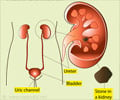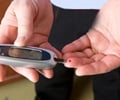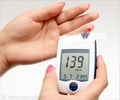Mayo clinic researchers have found that shock wave lithotripsy, which is given for treating kidney stones have increased the risk of diabetes and also hypertension in later part of life
Mayo clinic researchers have found that shock wave lithotripsy, which is given for treating kidney stones have increased the risk of diabetes and also hypertension in later part of life. Risk for diabetes was related to the intensity of the treatment and quantity of the shock waves administered; hypertension was related to treatment of stones in both kidneys.
Shock wave lithotripsy uses shock waves to break up an impassable kidney stone into smaller, sandlike pieces which can be passed spontaneously, usually within a month. The patient and the lithotriptor that emits the shock waves are placed in a water bath. Water allows easier conduction of the shock waves through the patient’s tissue and precise focus on the kidney stone.“This is a completely new finding,” says Amy Krambeck, M.D., Mayo Clinic urology resident and lead study investigator. “This opens the eyes of the world of urology to the fact that hypertension and diabetes are potential side effects. We can’t say with 100 percent certainty that the shock wave treatment for the kidney stones caused diabetes and hypertension, but the association was very strong. The risk of developing diabetes after shock wave lithotripsy is almost four times the risk of people with kidney stones treated with medicine, and the risk of developing hypertension is one and one-half times, which is a significant risk increase.”
The study, which is the first examination of the effects of shock wave lithotripsy over the long term, involved reviewing charts of 630 patients treated with shock wave lithotripsy in 1985 at Mayo Clinic. The researchers sent those still alive a questionnaire; almost 60 percent responded. The researchers matched the patients treated with lithotripsy to patients similar in age, gender and initial time of seeing a urologist for kidney stones who received a different treatment, medicine. Nineteen years post-treatment, those treated with lithotripsy had 3.75 times the risk of having diabetes as those given the other kidney stone treatment. The degree of increased risk rose with greater number and intensity of shocks administered. Those treated with lithotripsy also had 1.47 times the risk of having hypertension -- high blood pressure -- than those who received the other kidney stone treatment; risk was highest for those who had both kidneys treated.
The researchers hypothesize that the increase in risk for diabetes associated with shock wave therapy for kidney stones relates to damage inflicted to the pancreas, a previously known risk of lithotripsy, which may affect the islet cells in the pancreas that make insulin. They believe the increased risk for hypertension may relate to scarring, which the treatment may cause to the kidneys and could alter the secretion of hormones centered in the kidneys like renin, which influence blood pressure.
Drs. Krambeck and Joseph Segura, M.D., Mayo Clinic urologist and study investigator, say that they continue to use shock wave treatment, among other alternative treatments for kidney stones.
“Despite the risks, shock wave therapy still can save the day for patients, and it would be a mistake to put it on the shelf,” says Dr. Segura.
Advertisement
Dr. Segura stresses the need for kidney stone patients and their physicians to weigh the pros and cons of shock wave treatment according to individual situations. “It’s a trade-off about whether the risks are worth taking,” he says. “We’re assuming doing nothing is not the right thing to do for patients. You have to look at it in terms of treatment alternatives -- percutaneous stone removal [removing a kidney stone through a small incision in the patient’s back using an instrument called a nephroscope] or ureteroscopy [snaring a stone with a small instrument passed into the ureter through the bladder and then breaking up the stone with ultrasound or laser energy] -- each of which has its own set of risks.”
Prior to age 70, approximately 10 percent of men and 5 percent of women will experience a kidney stone, according to the National Institutes of Health. About 1 million people in the United States have had shock wave lithotripsy, says Dr. Segura.
Source: Newswise











